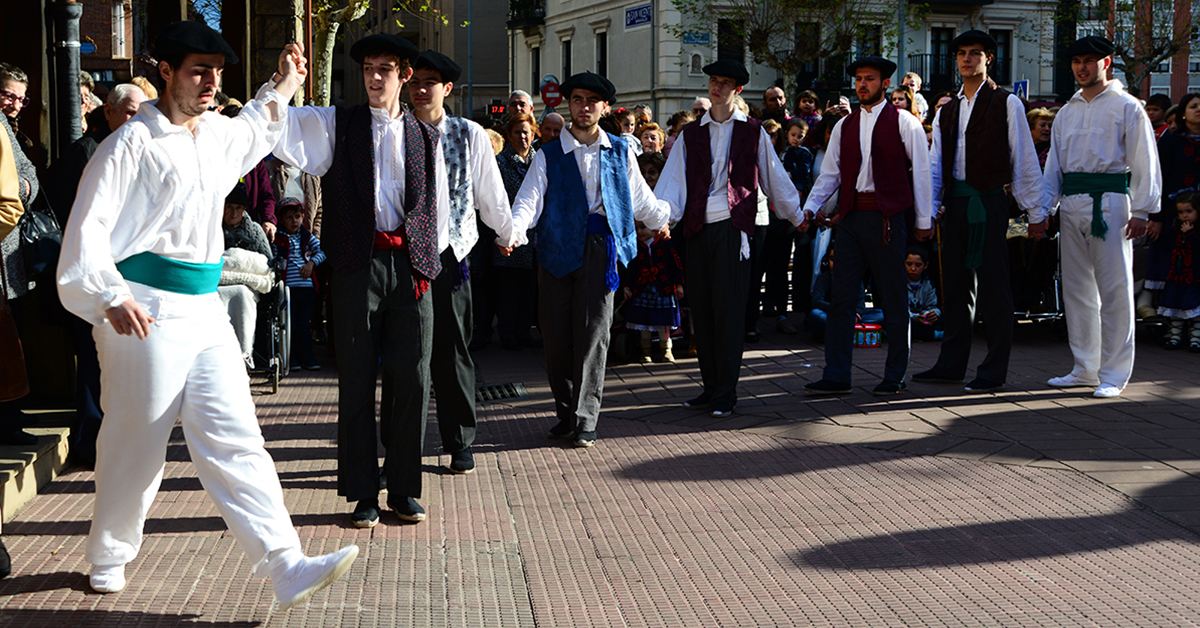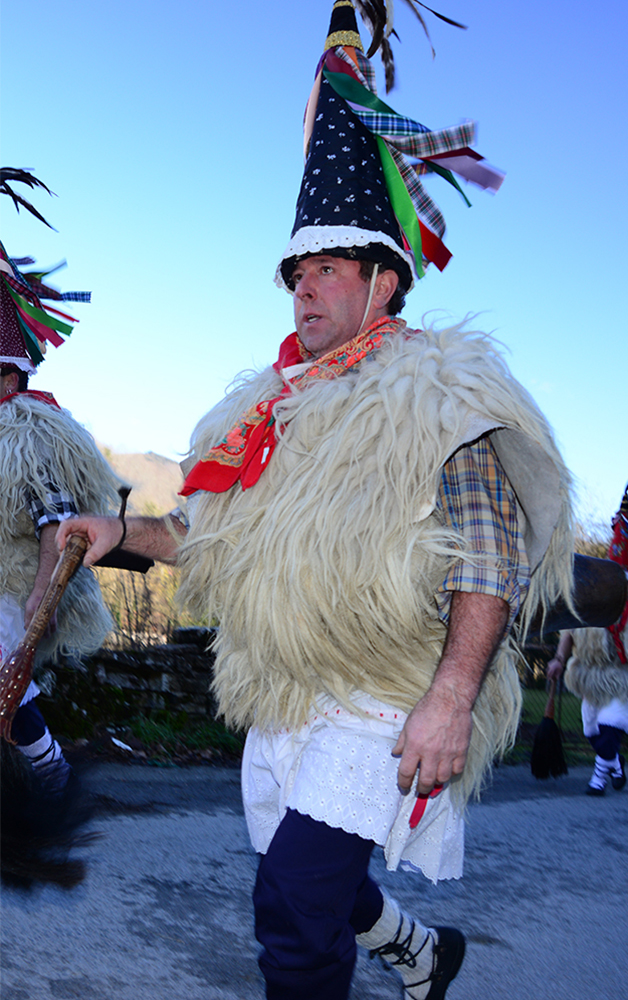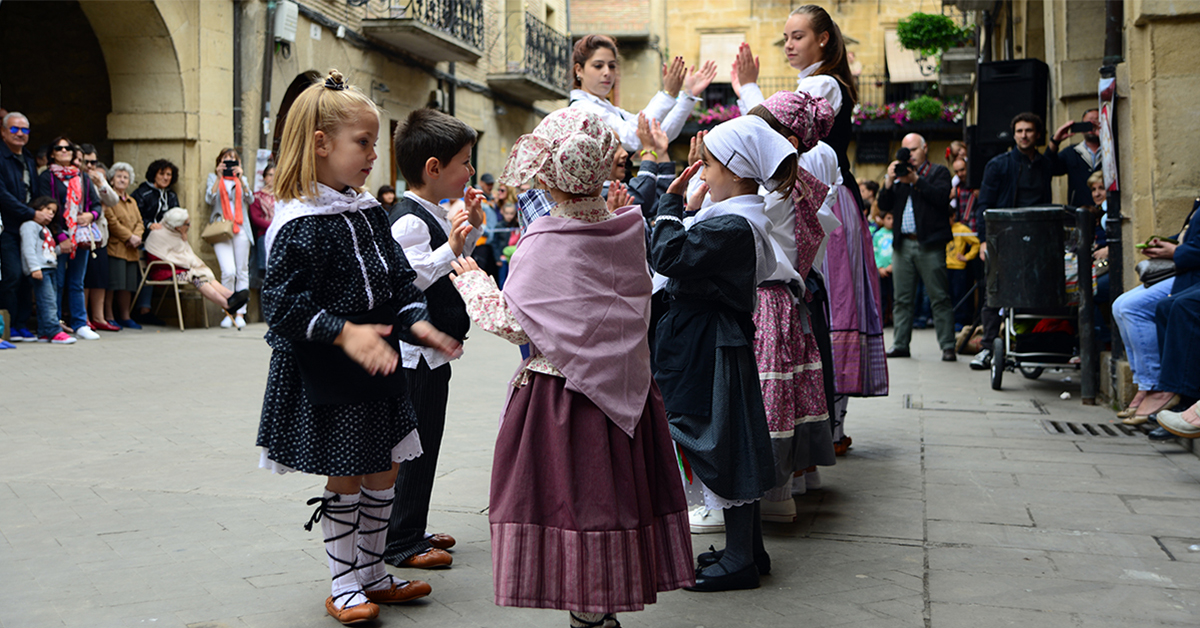Basque ethnography at a glance

Aurreskua performed San Vicente (Barakaldo) by a group (Laguntasuna) of people not considered as “indigenous” (2016). Photo: E. X. Dueñas.
Towards the end of April, people began to talk about the upcoming days of rest, thanks to the puente [literally bridge and used for a very long weekend when there is a working day between the weekend and bank holiday] around the corner: Sunday 30 April and the bank holiday on 1 May. Using that term for any long weekend is not new in the media or in everyday speech, even when there is no working day in between; laziness in language is behind these and other howlers: in proverbs, with “St. Michael’s Summer” (Indian Summer), instead of “St. Martin’s”; in sport competitions, leader five points from the second, instead of the other way around…
If we then turn our attention to the area of traditional culture, we find it is just more of the same. Thus, “indigenous dance groups” came into use in the 1970s to differentiate between groups actively involved in the rituals and performances of dance. The expression was used to refer to groups with their own dances or dances (from that place), and the others were just Basque dance groups (urban, shows, etc.). What is intriguing is that most call themselves “Basque dance” groups. Therefore, and according to the Dictionary of the Royal Spanish Academy, they are all indigenous groups, without any distinction being made. If we likewise add that many of them no longer only perform dances from their town or village and that, furthermore, they have sometimes received input from outside, as they no longer perform in their original location, we find more than one inconsistency.

Ioaldunak in Ituren, rebranded by the written press in the 1960s as Zanpantzar = dummy burnt on the bonfire (2015). Photo: E. X. Dueñas.
And then what can be said about carnival. I am not going to quote authors, so as not to be mistaken, but the objective in the 1960s and 1970s was to establish the specificity of the Basque carnival compared to all the other carnivals in the world; the solution was found by using two terms, “rural” and “urban”. Simple enough not to require any clarification, but complex enough to be difficult to defend.
The carnivals in Aretxabaleta, Mundaka, Hondarribia, Durango, Tudela, Asparrena and Basusarri are examples of ones that are now stereotyped and classified as “rural” (countryside) in the popular lexicon and, in general, considered to be “restored”. We can argue that the majority have rural aspects on the strength of the route through farmsteads and districts, and some accessories (sticks, certain attire…); however, the same is equally true if we turn to the urban sphere: do the centres of any of them not group houses together in a quarter? Are the apparel and utensils only primitive?
We should perhaps call these situations irredeemable. At least as much as noting the lack of equivalence for many Spanish-speakers of Basque = language spoken in villages.
Social changes are without fail tied to language and, therefore, to the meaning of words. Some make it into the dictionary, but others do not. What we fail to appreciate is that the information becomes interpretation and, eventually, is embedded in our vocabulary with insurmountable distortions, leading to misstatements – sometimes self-serving –, and with the ensuing lack of understanding between people, but that is for another occasion.
Emilio Xabier Dueñas – Folklorist and ethnographer


